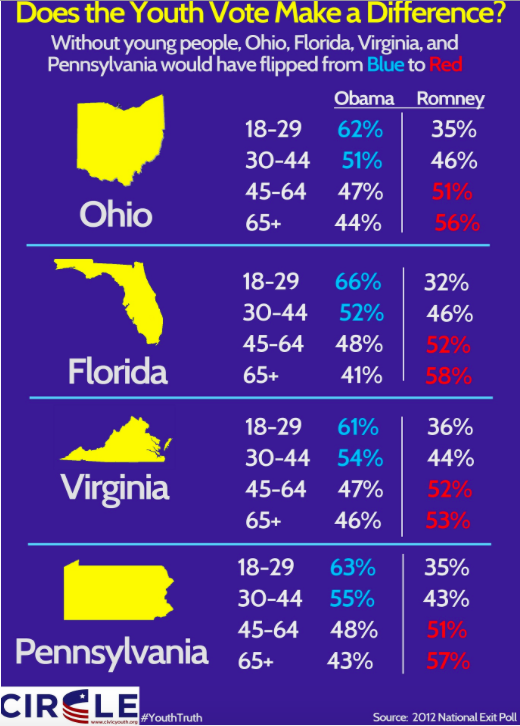
July 13, 2016
As the trusted pollsters over at FiveThirtyEight predict Donald Trump has a scant 20 percent chance of getting elected president in November, the latest swing state polls from Quinnipiac have sparked a new debate about the significance of a narrowing gap with Hillary Clinton in Pennsylvania.
In a June 21 survey, 982 Pennsylvania voters put Trump two points ahead of Clinton, 43-41, largely because analysts say she took a hit on perceptions of honesty and trustworthiness after the e-mail investigation. Even so, the slight difference falls within the survey's margin of error of +/- 3.1 percentage points. For what it's worth, the NBC/Marist poll has Clinton leading Trump 45-36 in Pennsylvania.
Key findings from Quinnipiac's Commonwealth survey include a shrinking gender gap — Clinton's 43-39 lead among women dropped from 50-34 in the previous poll — and a 56-36 difference favoring Clinton on presidential preparedness.
In and of itself, this is one summer poll conducted prior to both party conventions and the designation of vice presidential running mates. To the chagrin of many of his supporters, Bernie Sanders finally endorsed Hillary Clinton. There have been no televised head-to-head debates between Clinton and Trump.
Since members of both parties and people from all political persuasions — activists, insiders and the general public — have expressed notable objections to their own probable and presumptive candidates, some commentators are labeling this the election no one wants.
There you have democracy in the United States in 2016.
Including the Pennsylvania survey, Trump's 42-39 lead in Florida and a 41-41 split in Ohio mean three important battleground states remain fully in contention. Clinton's press secretary admitted as much in a tweet Wednesday morning.
We know the battlegrounds are going to be close til the end. That's why we need to keep working so hard. Trump is a serious danger, folks.
— Brian Fallon (@brianefallon) July 13, 2016
Independent voters in Pennsylvania are narrowly split at 39 percent for Trump and 36 percent for Clinton. The Trump campaign is leaving no stones (or wagon wheels) unturned. Earlier this week, an Amish PAC began running pro-Trump ads in local newspapers that emphasize the candidate's work ethic, pro-life stance and abstinence from drinking alcohol.
Amish PAC has begun running pro-Trump ads in Amish newspapers, noting that he "abstains from alcohol." pic.twitter.com/j7hNz6tSGO
— Daniel Dale (@ddale8) July 11, 2016
It's not clear how this will play with the Rumspringa crowd, but just like so many of them dutifully return, the presidential big picture inevitably does too: this election's most likely deciding factor, nationally and especially in these battleground states, will again be turnout among voters under 30 years old.
In 2012, Barack Obama took the youth vote by a national margin of 67 to 30 percent against Mitt Romney. He took 66 percent to John McCain's 31 percent in 2008. Over the last three general elections, meanwhile, the Democratic Party's share of votes has increasingly come from young citizens.
Looking at the 2012 election results in Pennsylvania, Ohio, Florida, and Virginia, President Obama's victories were crucially driven by wide margins among voters 18-30. In 2008, the youth vote made the same difference for him in Indiana, North Carolina and Virginia.
Infographic from civicyouth.org.
Certain critical issues that were reemerging in 2012 — Trayvon Martin was killed in February of that year — have since intensified. Conflicts in the Middle East have been more broadly defined as a fight against the transnational Islamic State. Debt, wages, health insurance, education and taxes are still, from a policy standpoint, the most generally applicable and energizing domestic issues.
Perception is Trump's best friend, maybe his only friend, and also his worst enemy. These "small rolls" certainly count for something, as do voters' support for Trump on certain issues and special interests.
But here's another way to look at it in terms of perception or intuition — politics somewhat aside.
Deep down, 51 percent of registered voters in last month's national CBS News Poll said that they expect Hillary Clinton to become president regardless of how they intend to vote, including a 47 percent to 33 percent edge for Clinton among Independents. Just 35 percent of all those polled said they expect Trump to win, plus another 13 percent who said they don't know and 2 percent who open-endedly said "it depends."
If it really depends, and the youth vote will again be a deciding factor, then Trump is in a real world of trouble.
Wednesday's results from the latest GenForward poll of 1,965 adults between 18 and 30 years old show that just 19 percent of young people have a favorable opinion of Donald Trump. Nearly two-thirds believe that he is racist.
The monthly survey is conducted by the Black Youth Project at the University of Chicago with The Associated Press-NORC Center for Public Affairs Research. It includes a representative sample of the young adult population: 510 African-Americans, 511 Hispanics, 321 Asian-Americans and 599 non-Hispanic whites.
Even if just 39 percent of the young people surveyed hold a favorable view of Hillary Clinton, their participation on election day will likely put her in the White House.
 Source/2012 National Exit Poll
Source/2012 National Exit Poll